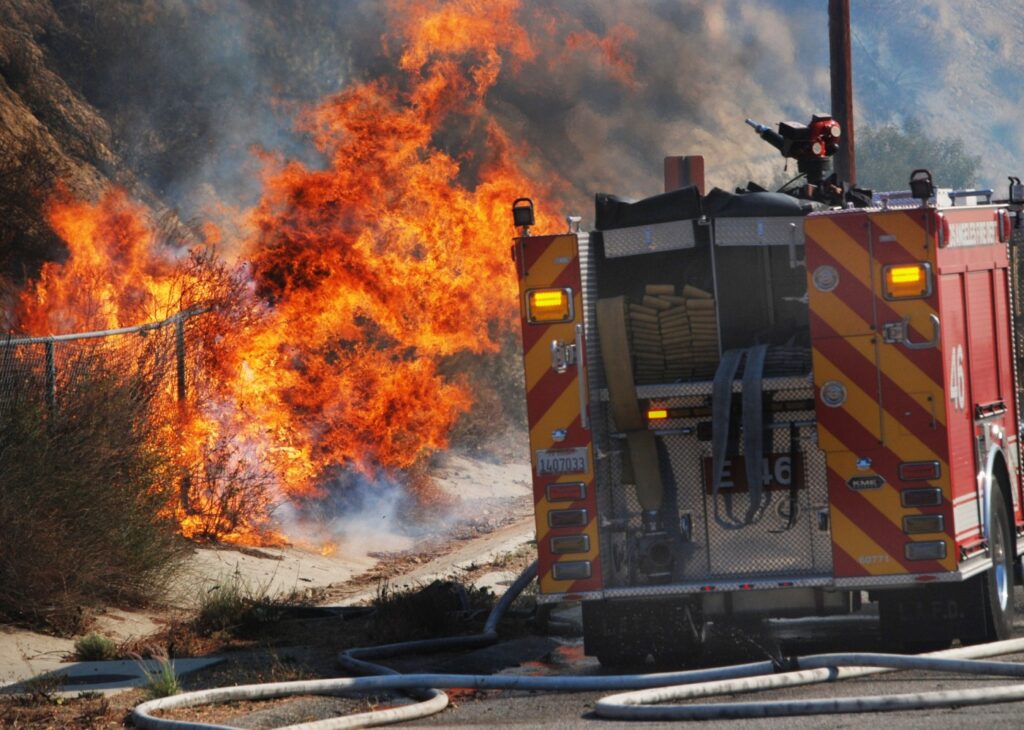
LOS ANGELES — The number of annual high-risk fire days in Southern California could double by 2100 thanks to steady temperature increases brought on by climate change, according to a UCLA study released Thursday.
The study, published in the Nature journal Communications Earth & Environment, found that in terms of actual acreage burned in the state each year, there has been a sharp upturn, primarily due to large fires in Northern California.
Southern California, however, has not seen a significant jump in burn area over the past 45 years.
But the data analyzed in the study paint a picture of increasing fire danger in the coming decades in conjunction with gradually increasing temperatures.
According to the study, if the average temperature in Southern California increases by nearly 9 degrees by 2100 — a likely scenario absent a major reduction greenhouse gas emissions — the region’s annual number of high-fire-risk days would nearly double to 58 per year.
Even assuming a more conservative temperature rise of 5.4 degrees — which could occur with aggressive measures to address climate change — the annual number of high-risk fire days would still jump by about 60% by 2100, according to the study.
“I look at our data and think, ‘The probability of having one of those big fire events is increasing year by year as we dump more carbon dioxide into the environment,’” UCLA climate scientist Glen MacDonald, the study’s co-author, said in a statement. “That’s not theoretical. That’s stressing me out in the autumn and the early winter.”
He noted that while Southern California hasn’t seen a dramatic annual increase yet in acreage burned, the region has seen its share of major fires in recent years, such as the 97,000-acre Woolsey Fire and the 280,000-acre Thomas Fire.
Researchers said addressing greenhouse gas emissions will be critical to at least limiting the fire risk in the future.
“Carbon dioxide can stay in the environment for a long time,” lead author Chunyu Dong, who performed research for the study while at UCLA and is now an associate professor at the Center for Water Resources and Environment at Sun Yat-sen University in China, said in a statement. “It will be too late when Southern California is struggling to battle with the endless fires.”
Related Articles
Emerald fire in Laguna Beach area is 90% contained
This map shows where the Emerald fire is burning near Laguna Beach
Emerald fire in Laguna Beach area contained at 20% as officials warn, ‘Stay vigilant’
Photos: Big Sur wildfire burns near iconic Bixby Bridge, evacuations under way
Big Sur wildfire forces evacuations; Highway 1 closed in both directions
